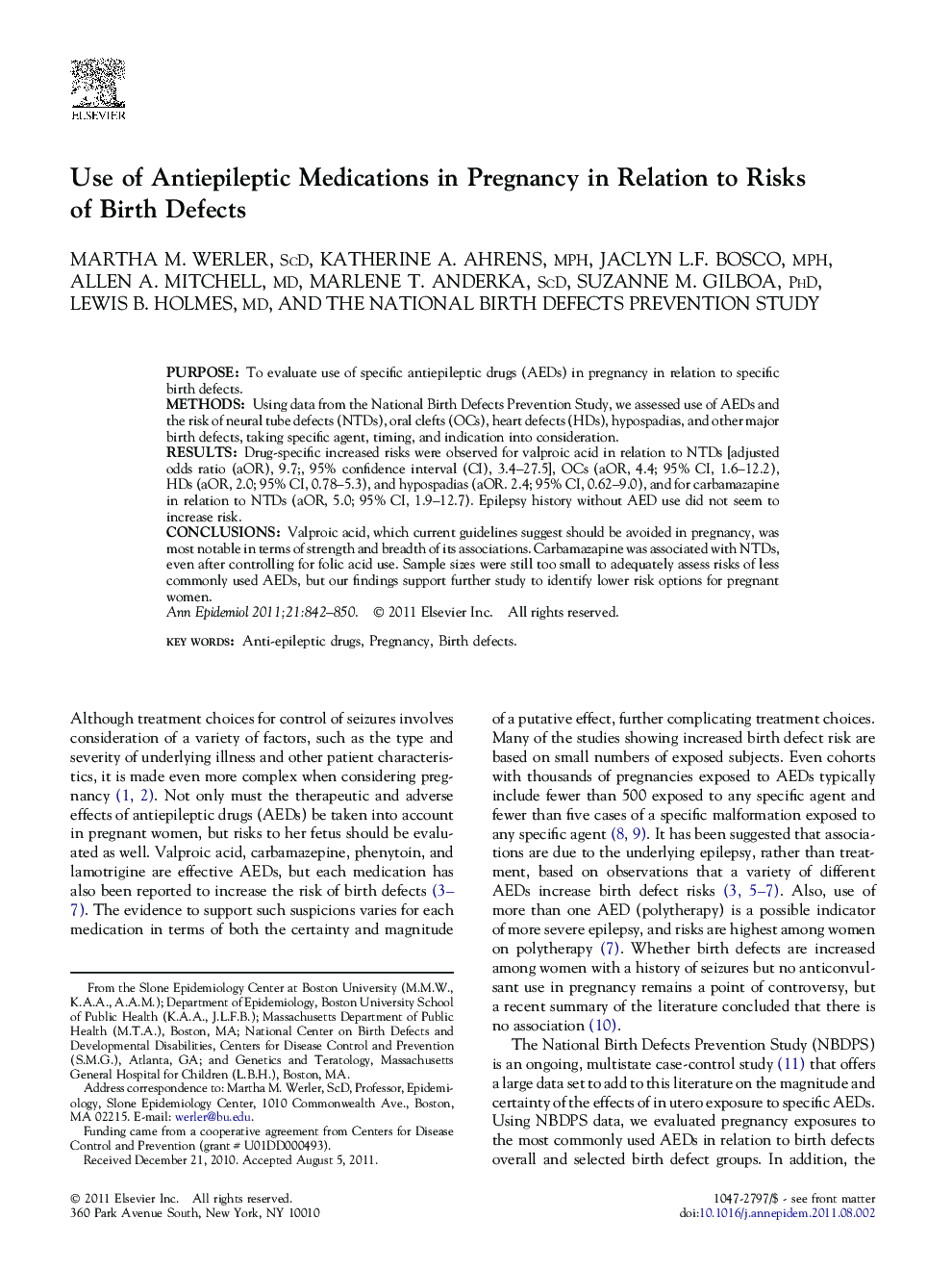| Article ID | Journal | Published Year | Pages | File Type |
|---|---|---|---|---|
| 3444464 | Annals of Epidemiology | 2011 | 9 Pages |
PurposeTo evaluate use of specific antiepileptic drugs (AEDs) in pregnancy in relation to specific birth defects.MethodsUsing data from the National Birth Defects Prevention Study, we assessed use of AEDs and the risk of neural tube defects (NTDs), oral clefts (OCs), heart defects (HDs), hypospadias, and other major birth defects, taking specific agent, timing, and indication into consideration.ResultsDrug-specific increased risks were observed for valproic acid in relation to NTDs [adjusted odds ratio (aOR), 9.7;, 95% confidence interval (CI), 3.4–27.5], OCs (aOR, 4.4; 95% CI, 1.6–12.2), HDs (aOR, 2.0; 95% CI, 0.78–5.3), and hypospadias (aOR. 2.4; 95% CI, 0.62–9.0), and for carbamazapine in relation to NTDs (aOR, 5.0; 95% CI, 1.9–12.7). Epilepsy history without AED use did not seem to increase risk.ConclusionsValproic acid, which current guidelines suggest should be avoided in pregnancy, was most notable in terms of strength and breadth of its associations. Carbamazapine was associated with NTDs, even after controlling for folic acid use. Sample sizes were still too small to adequately assess risks of less commonly used AEDs, but our findings support further study to identify lower risk options for pregnant women.
